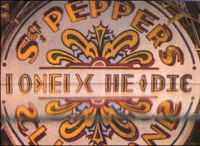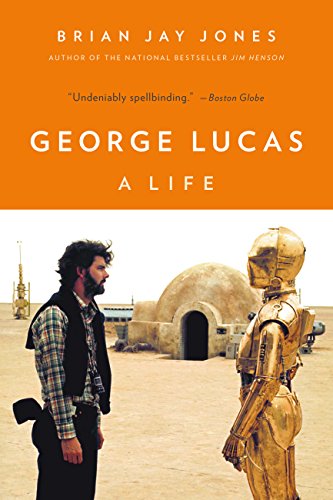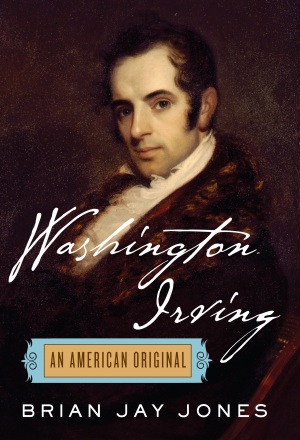 One of the more fun and fascinating bits of Beatles lore has always been the whole “Paul Is Dead” hoax. The story spun by that particular hoax is that Paul McCartney allegedly died in an automobile accident in 1966 – a “stupid bloody Tuesday” – and the heartbroken Beatles decided to soldier on without him, replacing McCartney with a lookalike, but planting clues of Paul’s demise in Beatles songs and on album covers. Books could be written about the hoax – and, in fact, a few
One of the more fun and fascinating bits of Beatles lore has always been the whole “Paul Is Dead” hoax. The story spun by that particular hoax is that Paul McCartney allegedly died in an automobile accident in 1966 – a “stupid bloody Tuesday” – and the heartbroken Beatles decided to soldier on without him, replacing McCartney with a lookalike, but planting clues of Paul’s demise in Beatles songs and on album covers. Books could be written about the hoax – and, in fact, a few have
– but now comes Joseph Niezgoda, in The Lennon Prophecy: A New Examination of the Death Clues of The Beatles
to tell us that everyone’s got it wrong. The clues aren’t there to detail Paul’s demise, Niezgoda says, but rather to foreshadow John Lennon’s violent death in 1980, payment to the Devil for a 20-year pact Lennon made with Satan in 1960.
Yes, really.
According to Niezgoda, at some point in December 1960 — likely between the Beatles’ anticlimactic return from Germany on December 10, when the group seemed on the verge of breaking up, and their triumphant appearance at the Litherland Town Hall concert on December 27, the night it is generally accepted that Beatlemania was born – John Lennon traded his soul to the Devil in exchange for rock and roll fame and fortune. Twenty years later, in December 1980, the Devil called in the debt, using a demonically-possessed Mark David Chapman as his instrument of death.
On that wacky premise, Niezgoda devotes 186 pages to analyzing John Lennon’s behavior, scrutinizing album covers, scrubbing lyrics for hidden meanings, and generally working way too hard to come up with spooky numeric coincidences to support his theory. Like the Paul is Dead theory, I don’t buy one word of it; unlike the Paul is Dead theory, however, this one is neither fascinating nor even all that convincing. Niezgoda’s theories and his interpretations of events, lyrics, and images, are almost always eye-rollingly dopey, and ultimately require enormous leaps in logic or imagination to make lyrics, album covers, or anything else fit his theory.
Part of the problem is that Niezgoda is completely humorless. Sarcasm, satire, puns and plays on words are completely lost on him. Lennon’s wit—one of his most enduring traits—baffles Niezgoda, as does Lennon’s use of metaphor and delight in wordplay. And Niezgoda—who calls himself a “life-long Beatles fan, collector, and scholar”—doesn’t seem to be able to put Lennon or his quotes in context. He can’t tell when Lennon is joking, bragging, or being dismissive. He’s absolutely tone deaf.
Anyway, to spare you from ever having to read this thing, I’m going to give you a rundown of some of Niezgoda’s claims to give you an idea of just how loopy, and how spurious, Niezgoda and his claims can be.
Early on, in a chapter titled “Bewitchery of the Masses,” Niezgoda asks how to explain the enormous effect the Beatles had on their fans. How does one account for the swooning, the fainting, the screaming? Could it perhaps be their undeniable charisma or talent? Ridiculous, Niezgoda says; those are exactly the kinds of “intangible” and “indescribable” qualities that manager Brian Epstein and producer George Martin ascribed to the band—and they’re indescribable, Niezgoda says, because they were a gift from the Devil. So, Niezgoda’s first “evidence” of demonic influence is Beatlemania itself, in all its inexplicable, unexplainable wonder.
It’s not enough to sell one’s sell to the Devil, though—as Niezgoda explains earnestly, one must also do all he can to actively deride God and religion. Therefore, any time Lennon mentions God, religion, Christ, or his soul, Niezgoda pounces. While he naturally makes hay of the “bigger than Jesus” statement—though not as much as one might expect, giving it only eight pages—any other reference to God is dissected looking for hidden meaning. For example, when John Lennon, following the massive Shea Stadium concert in 1965, remarked that it was “louder than God,” Niezgoda arches an eyebrow curtly. “Why did he chose that analogy?” Niezgoda demands. And when an exhausted Lennon tells childhood friend Pete Shotton at the height of Beatlemania that he often feels he’s sold his soul, the nonplussed Niezgoda can only take the most literate Beatle literally.
Niezgoda is at his most bizarre, though, when analyzing music, lyrics and album covers. The intricate, interwoven images on the cover of Revolver don’t trouble him all that much—but he’s convinced that the album’s name has to be a foreshadowing of the kind of gun that would be used to kill Lennon fourteen years later. Certainly, the name Revolver has nothing to do with the fact that vinyl records were played by placing them on a turntable that revolved at a certain speed—thus making any record, in a sense, a “revolver,” right? Again, that sort of word play is lost on Niezgoda.
He’s more fascinated by the infamous “butcher cover” for the Yesterday … And Today album—with the Beatles in butcher smocks covered with dismembered dolls and raw meat—which Niezgoda is all but certain is Lennon’s nod to “the most reviling sacrifice to Satan . . . the killing of young innocent children—infanticide.” Niezgoda quotes Lennon’s enthusiasm for the project (“I would say I was a lot of the force behind it going out,” Lennon once said) as the final word on the impetus behind the photo—but either doesn’t seem to realize or completely ignores the fact that both Paul McCartney and photographer Robert Whitaker have claimed credit for the idea, too. Whitaker’s version, in fact, holds up to the most scrutiny, as the photo was actually part of a series of artsy photos Whitaker staged, including one in which George Harrison appears to be driving nails into Lennon’s head. Lord knows how Niezgoda would have interpreted that photo.

A harbinger of death?
The real stretch, however, comes in his scouring of the cover of A Collection of Beatles Oldies—a relatively obscure album released in the UK and Australia in late 1966. While the Paul is Dead crowd point to the drawing of the car getting ready to crash into the lounging figure’s head as a “death clue” for Paul’s alleged death by automobile, Niezgoda’s got something much more clever in mind: “[The figure’s] right crossed leg, with only slight imagination, can be seen as the letter ‘J,’ and it rests aside the word ‘OLDIES’ . . . [t]ogether, they spell ‘JOLDIES'”—or, as Niezgoda explains, “JOL (John Ono Lennon) DIES.” Cue the thunderclap and opening notes of Toccata and Fugue. And don’t try to tell Niezgoda that Lennon was 16 months away from changing his middle name from Winston to Ono when the album was released—he’s already ahead of you: it’s a “craftily constructed prophecy,” don’t you know?
Sgt. Pepper also falls under a similar scrutiny—although, unlike the Paul Is Dead gang, Niezgoda isn’t as much interested in the front cover as he is the back, where the Beatles, with the album’s lyrics superimposed over them, appear against a blood red background (nothing is ever red in Niezgoda’s book; it’s always blood red!). McCartney famously stands with his back to the camera—“turning his back on John and what he knew of the fatal pact,” Niezgoda says solemnly—but the real clue lies in the layout of the lyrics from George’s “Within You, Without You”: the words “lose their soul” are perfectly centered on John’s waistline. Pretty sinister, huh?

The Devil is a sore winner.
Even sillier is Niezgoda’s discussion of the drumhead on the cover of Pepper, an image already overanalyzed by the Paul Is Dead aficionados. Niezgoda relies on the same parlor trick as the Paul Is Dead gang, using a mirror to bisect the words LONELY HEARTS (which, he points out sinisterly, are in a different font from the rest of the drum!) to reveal a messy I ONE IX HE DIE. For the Paul Is Dead people, this convoluted hidden message means that Paul died on November 9th (with “I ONE” meaning eleven, and IX meaning 9, for 11/9). Not for Niezgoda. Instead, he reads this as a taunt from Satan to John Lennon: “I won! Nine, he die!” Nine, Niezgoda explains, is the day Lennon died—because it was already December 9th in Liverpool, you see, when John died in New York on December 8th.
That kind of convoluted numerology, in fact, is where Niezgoda becomes wearying. Lennon himself made much of the number 9 in his life—he was born on the ninth and included the number in the title of several songs—but Niezgoda comes up with some truly inane readings and sleights-of-hand to arrive at his nines. For example, he points out that if you dial the name JOHNONOLENNON on a push button phone, you get 564666536666 – and wow, look at all those sixes, which are really just nines standing on their heads. And only Niezgoda could read “One After 909” as an omen—it’s waaay too confusing to explain how it predicts Lennon’s death down to the day—all the way down to a reference to Yoko as a his “bag.”
The punch my ticket moment, though—the moment I knew Niezgoda was in way over his head—arrives on page 122, as Niezgoda does some headscratching over the band’s name:
“’The Beatles’ was a curious choice of name for a band, especially because it’s spelled wrong. In 1961, John wistfully explained to Mersey Beat where he got the idea: ‘It came in a vision—a man appeared on a flaming pie and said unto them, ‘From this day on, you are Beatles with an A’”
With an absolutely straight face, Niezgoda explains that Lennon had to spell “beetles” incorrectly so he could use the letters to make an anagram of “seal bet,” hiding in plain sight his pact with the Devil. As for the man on a flaming pie, Niezgoda points out, his gears churning, that “man on a flaming pie” scrambles as “pagan flame minion.”
Apparently, the pun on “beat” in the word “Beatles” seems to never have occurred to the humorless Niezgoda—he’s too busy making scary sounds and tut-tut noises. (As for the “pagan flame minion,” you can also anagram “man on a flaming pie” to make “film an ape moaning,” but that hardly means Lennon had hidden aspirations of being a voyeuristic zookeeper). I can’t tell if Niezgoda is being intentionally ridiculous here, or if he’s really that clueless.
Niezgoda’s last chapter contains two incredibly odd bits of contrived thinking and backwards logic. The first is a way-out reading of James Joyce’s Finnegans Wake – a book published a year before Lennon’s birth, but which Niezgoda is nonetheless convinced contains prophecies of Lennon’s life and death. And that’s mostly because, at certain points over its 600 pages, Joyce uses words like “beetle,” “pepper” and “funeral.”
The second is a wacky bit of mathematics in which Niezgoda chooses three songs he believes “place the final moments of John Lennon’s life to music”: “I Am The Walrus,” “Revolution 9,” and “#9 Dream.” Niezgoda informs us that the total elapsed time from the moment Lennon was shot to the moment he died was 17 minutes—and I think we’re supposed to get chills when he informs us that the total time playing time for those three songs is 17 minutes, 42 seconds. Niezgoda provides us with absolutely no reason why there should or should not be a correlation between the playing time of these songs and Lennon’s last moments. It’s a completely nonsensical premise and farcical train of thought, and we’re supposed to somehow be spooked by it.
But that sort of spurious thinking is the norm for Niezgoda. His premise is a bizarre one to begin with, but The Lennon Prophecy is full of so many thin, lame, and eye-rollingly ridiculous theories that it’s impossible to take seriously. Yet, Niezgoda does. And “no one,” he writes in his wistful introduction, “is sorrier than I about what is written here.” Except maybe those of us who’ve read it.








I trust your analysis. I’m not surprised there are wackos out there who write this kind of stuff (or Amazon reviewers who review it favorably), but I don’t understand how it gets published in the first place.
Until I look up the publisher: New Chapter Press. They should stick to poker and tennis.
LikeLike
Wow. I hope it’s this easy for me to find a publisher when I’m ready.
Here’s a question: How does one even contact the devil to sell one’s soul? Did Lennon have a direct line (rotary dial, I assume)? By the way, it took me exactly 39 seconds to write this comment, which is exactly equal to the amount of time it took Lennon to blow his nose after the allergy fit he had back in ’69. Coincidence? I think not!
LikeLike
That would explain why in the lyrics for Imagine he sings, “No Hell below us.” Because you know, of course Lennon would deal with an entity he doesn’t believe in. Yes, it’s all so clear now.
BTW, it’s totally cool how amongst the possibly related posts is The Path To A New Pontiff. Coincidence? I doubt it.
LikeLike
Believe it or not, but I just read this book from cover to cover. I found a copy in a second hand book store and while browsing it, it reminded me about a book I read about 9 (yes, 9!) years ago which claimed Chapman was actually a brainwashed CIA agent. That particular book was the most apparently stupid book concerning The Beatles that I had ever read, until now. This one is even more stupid. It is also vulgar and tasteless.
While describing the actual assasination; Niezgoda writes these exact words following his description of John being shot, AND I QUOTE!:
‘This was John’s final crescendo. Where were all of his gold record awards? Where were his earthly possessions? Where were his millions of adoring fans? Where was his God? Now, it was nearly over for John as he lay in his blood on the floor of the foyer of his Dakota apartement building.’
While reading this book, the question uppermost in my mind was not wether it’s writer’s theory was either true or false. I mostly found myself wondering about mr. Niezgoda’s personal agenda in all of this mess. What’s his background, and what’s his angle for writing this book? Is HE a Christian?
He seemingly quotes a catholic exorcist on page 126 as a true authority, but at the same time is very carefull to leave room for ambiguity. He does not say we SHOULD believe the exorcist. We should CONSIDER believing him. And this is no incident. Mr. Niezgode writes like that all the time. It’s as if he wants to rob the bank, but never really does beacuse he’s afraid to get caught. He doesn’t present us with a clear view of his own personal beliefs, and as a result, the book comes off as deceitfull.
LikeLike
I read the book last night. It’s a bit of strain on numerology. If written by a Beatles fan who confesses to liking the band but dismissing their musical acumen it doesn’t work real well. They broke the barriers for groups like the Kinks and the Stones as they came along later.
LikeLike
At the VERY LEAST, anything connected to the Beatles MAKES MONEY! Brian Epstein famously gave away tens of millions of dollars in royalties for literally PENNIES on the DOLLAR and made scores, if not hundreds or even THOUSANDS, of people VERY RICH! This is just another attempt to cash in, or as I like to say “flogging that dead horse”, on a phenomenon that was as mind boggling as it was, musically, without equal.
LikeLike